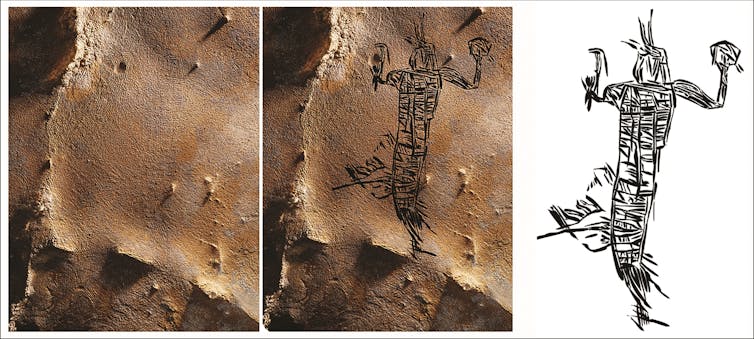
Human figure (1.81m tall).
(photograph by S. Alvarez; illustration by J. Simek/ Antiquity journal
(photograph by S. Alvarez; illustration by J. Simek/ Antiquity journal
In terms of dating the findings, ancient people rejuvenated a light in the cave (a flaming torch of American bamboo) by stubbing it against the cave’s wall. This left a residue that the researchers were able to date with radiocarbon to 133-433 AD. This was also in accord with the age of pottery fragments ancient artists left in the cave.
The problem is seeing the paintings. The cave ceiling is only 60cm high, which makes stepping back to view the large images impossible. They were revealed only through a technique called photogrammetry, in which thousands of overlapping photographs of an object or place are taken from different angles and digitally combined in 3D. Photogrammetry is a cheap technique increasingly used in archaeology to record artefacts, buildings, landscapes and caves. It allowed Professor Simek’s team to “lower” the cave floor up to 4 metres, enough for the complete motifs to come into view for the first time.
Read the rest of this article...
No comments:
Post a Comment
Note: Only a member of this blog may post a comment.